The exotic, aesthetic fading tattoo of henna

The art of temporarily staining the skin with henna can create stunning, intricate designs that hold cultural significance. In Penang, this tradition is embraced by the Indian, Sikh and Malay communities, where it represents a rich, intangible cultural heritage, evoking cherished memories of festive celebrations and weddings. Visitors to Penang also join in the tradition, often adorning their hands with henna as part of the festivities. With henna artists readily available year-round in Little India, anyone can enjoy these beautiful designs, even for casual occasions.
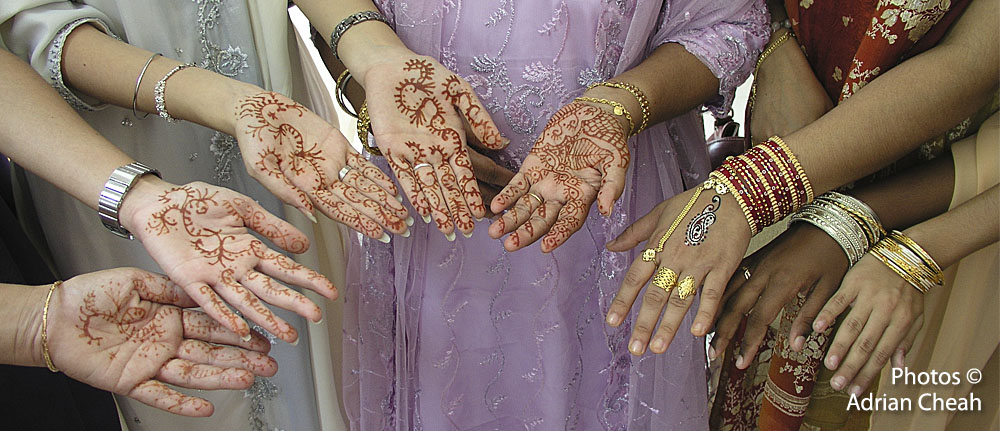
If you are applying the design yourself, henna cones filled with dye paste are easily available at many shops in Little India. Alternatively, you can create your own paste by mixing sifted henna powder (sifting helps remove small fibres) with an acidic liquid like lemon juice. Dilute the mixture with a bit of water – rose water works well – and let it sit overnight to develop. Some people also add a few drops of essential oil to enhance the paste before applying it. For a more detailed guide, you can find numerous videos online by professionals who specialise in preparing henna paste.
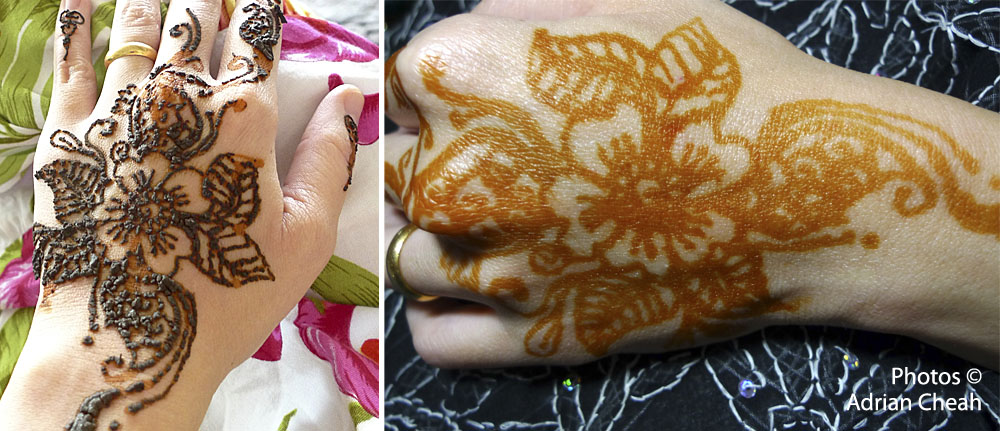
While the colour of henna stains can vary, they should typically range from a vibrant brownish-orange to deep green or dark brown – never black. Be cautious of purchasing chemically enhanced pastes that have been chemically enhanced as they can cause adverse skin reactions for some.

The fluid henna paste, filled into a slender cone-shaped funnel, is used to create intricate patterns and symbolic motifs on the skin, most commonly on the hands and feet. The pigments in henna leaves, known as lawsone, react with proteins in the skin to produce the characteristic stain. Once applied, the henna should be left to set for a few hours. To ensure the design lasts, avoid getting the area wet for the first day after application. The decorative stain will gradually fade over the course of several days or weeks, depending on how often the area is washed. To prolong its lifespan, avoid contact with detergents or bleach.

Illustration of lawsonia inermis in Species Plantarum by Carl Linnaeus.
Let us take a closer look at the slender henna plant, locally known as inai in Malay and mehndi in Sanskrit, meaning myrtle. Scientifically named Lawsonia inermis, the plant was only formally recorded in 1753, though it had been used in ancient Egypt and India for thousands of years prior. The precise origin of the henna plant remains a subject of historical debate, with many possibilities. Yet, regardless of where it first appeared, henna has become deeply rooted in cultural traditions worldwide, its timeless beauty and symbolism transcending borders.

The henna plant thrives in the tropical climates of Africa, northern Australia and South Asia. It can grow as either a large bush or a small tree, depending on the conditions of the soil and climate. When its fresh green leaves are pounded, they produce a bright orangey-red dye. For a deeper, richer hue, the leaves are dried, crushed and ground into a fine powder, with the quality of this powder playing a key role in the effectiveness of the staining process.
In addition to its leaves, the henna plant boasts large clusters of small, fragrant flowers in shades of white, yellow, or rose, whose extracts have been used in perfumes for centuries. Even its berries are valuable, commonly incorporated into medicinal mixtures.
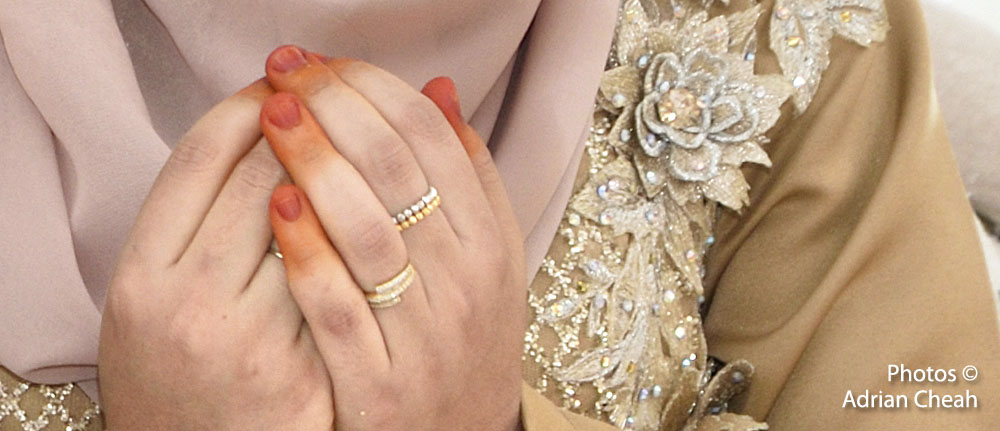
In Malaysia, it is customary for Malay brides to adorn their nails with inai during the Malam Berinai, a traditional ceremony typically held three days before the wedding. Some grooms also partake, usually staining just one or two fingers. This ritual is believed to protect the bridal couple from misfortune, symbolising blessings and safeguarding them as they embark on their new life together.
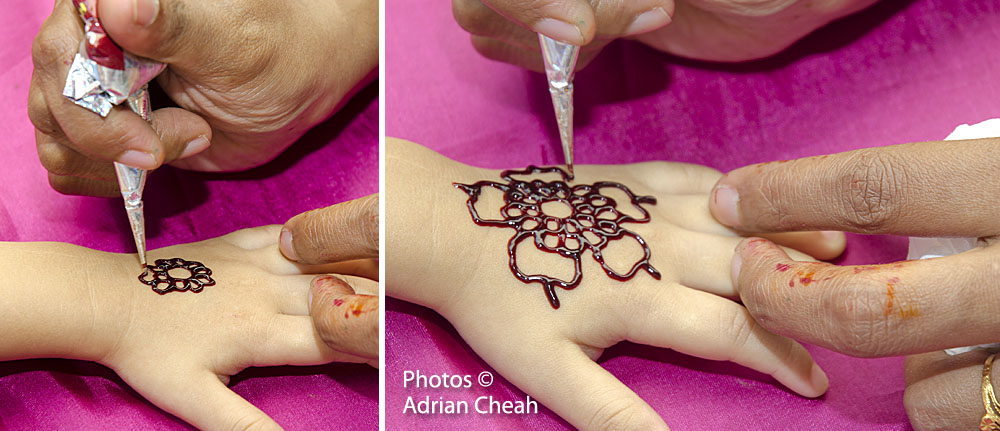
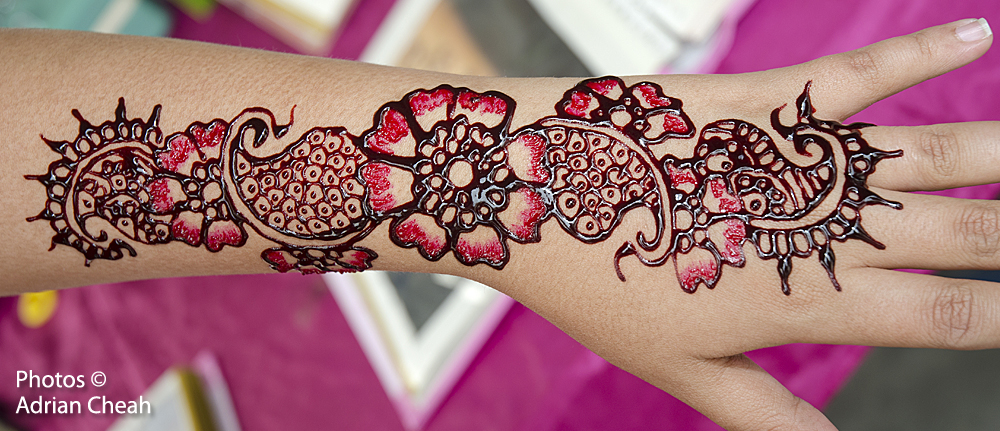
Every line, curve and design crafted by the henna artist is deliberate and meaningful. The patterns often draw inspiration from nature, Rajasthani art and classical Indian motifs, which are highly favoured. To simplify the selection process, henna artists in Little India typically offer a catalogue of designs for customers to choose from. Naturally, more intricate and elaborate designs come at a slightly higher cost, reflecting the time and skill required to execute them.

Gently squeezing the tip of a henna cone, the artist draws each design freehand, creating intricate and symbolic patterns. These flowing designs often radiate from a central point and may feature geometric shapes, mandalas, birds or flowers. Typically, both the artist and the sitter are women. A skilled artist demonstrates remarkable control over each line, and watching her work is a captivating experience. However, the sitter plays an equally important role – she must remain as still as possible, avoiding sudden movements to ensure the design is executed flawlessly.
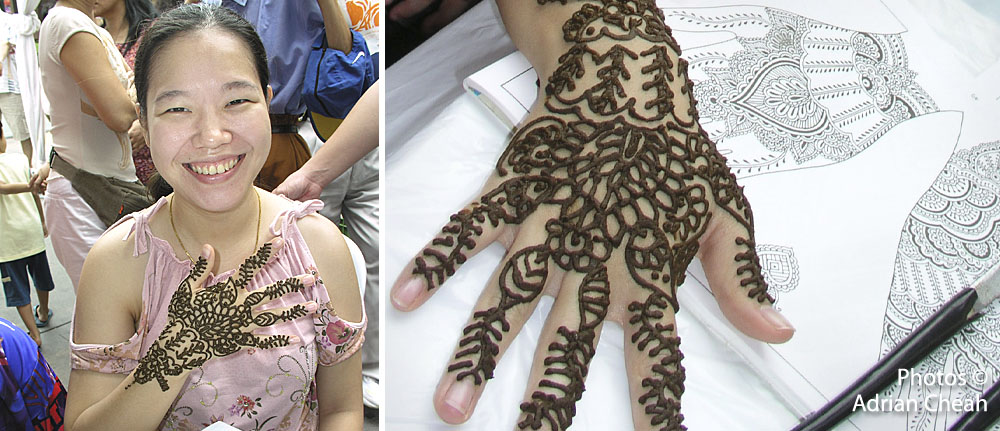
I believe that henna art is a good practice of patience and grace, both for the artist and the sitter. Although modern interpretations of traditional designs are common today, the artist would respect the sanctity of the tradition and be sensitive regarding the placement of sacred images (i.e., an image of a deity such as Gaṇeśa, never on the feet).
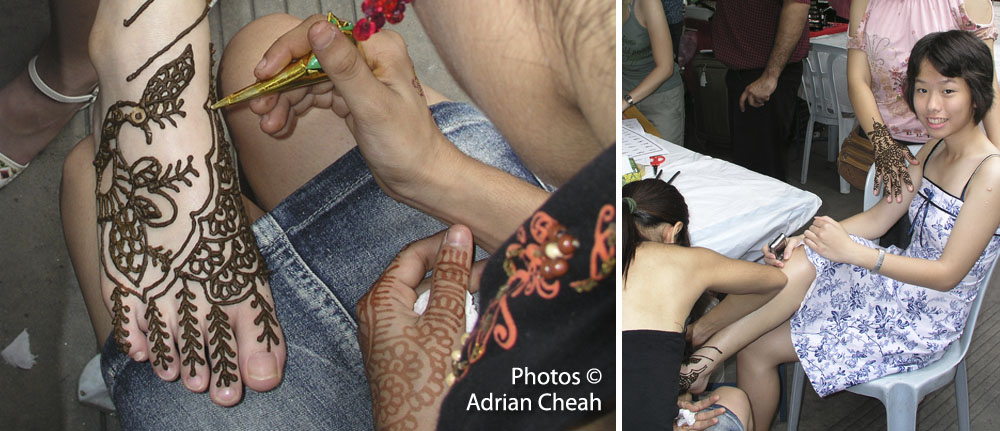
Do not be afraid to ask the artist about the designs available, meanings and origins. You might be intrigued by their symbolic significance as many are secret symbols of love, prosperity and fertility. Henna art usually decorates the palms, the back of hands and feet, although it can be applied on different body parts as well. Combing the internet, I came across images of henna art on pregnant bellies and on clean shaven heads of those undergoing chemotherapy. Among many others, celebrities like Madonna, Beyoncé, Rihanna, Katy Perry and Liv Tyler have joined Bollywood stars in adorning henna tattoos proudly in public.
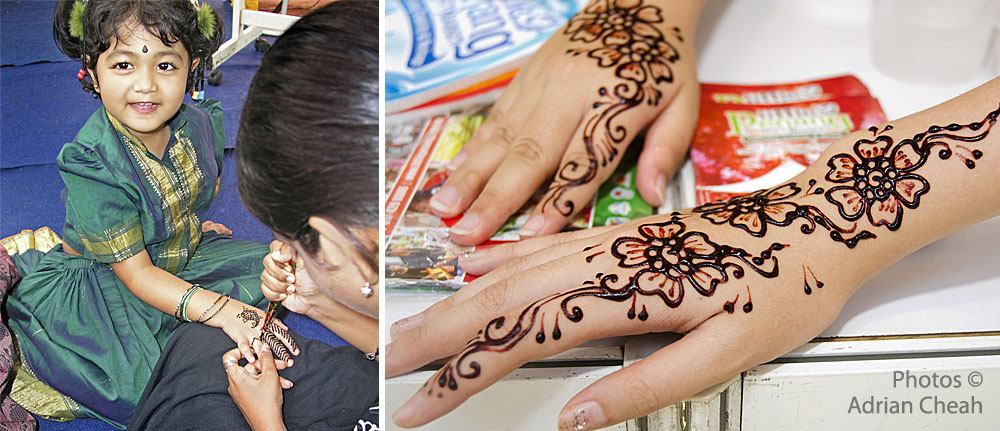
The non-painful process and temporary nature of henna are appealing to many. The powerful phytochemicals in the henna, like tannins and phenolics, provide great benefits, helping to nourish the skin. Some even claim that its antimicrobial properties effectively combat various skin issues.
The henna is used as a hair dye as well. Being a natural dye sans toxic chemicals, users opine that henna softens and strengthens their hair besides adding shine to it. Some even go as far as to claim that it is an effective natural remedy for hair loss.
Do you know that the henna is used for dyeing fabrics like wool, silk and leather? With its multitude of uses, the henna shrub has been cultivated widely and will continue be among the botanical darlings for ages to come.
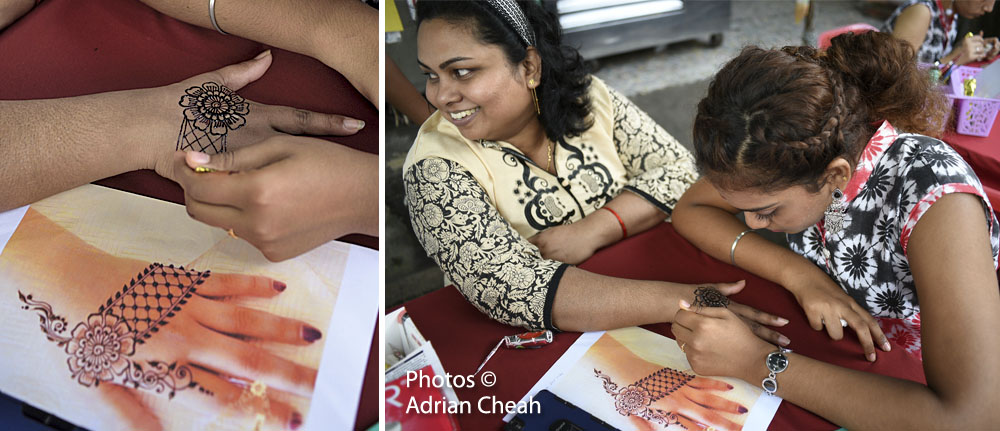
The next time you visit Little India, stop and have masterpieces "tattooed" onto the palms of your hands. Beyond their aesthetic appeal, henna designs can offer benefits for both the mind and soul, serving as significant positive symbols that resonate deeply, touching not only your skin but also your heart.
-------------------------------------
Written by and photographed by Adrian Cheah
© All rights reserved
Updated 25 October 2024